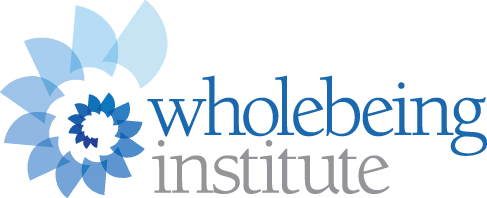“What we once enjoyed and deeply loved we can never lose, for all that we love deeply becomes a part of us.”
—Helen Keller
Over the last 40 months, I have facilitated over 400 groups in my community. We have shared so much of our lives—our struggles, fears, hopes, joy, loneliness, and pretty much every human emotion you can imagine. As a septuagenarian, I have never experienced anything like this liminal time with people. We have crossed many thresholds as we transitioned boundaries and borders with ambiguity and uncertainty—and we did it together.
Over the months, we have grieved individually and collectively as the pandemic and other disasters changed every aspect of our lives. Our entire world experienced waves of numbness, shock, reactivity, and grief. Even now, as the acute nature of these emotions recedes, many of us continue to have amorphous and vague feelings that we can’t quite describe.
A Mix of Vague Feelings
These feelings have been present throughout these many months, sometimes in the background and, at other times, front and center. Reflect on your own feelings of anxiety, distress, irritation, even anger. Maybe you feel a slight numbness and you can’t quite reach your usual level of happiness, let alone joy? These vague feelings of distress, sometimes called disenfranchised grief, are often the result of ambiguous loss—losses that remain unclear, are hard to pin down, and have no closure.
The groundbreaking theory of ambiguous loss was developed by Pauline Boss, PhD. Dr. Boss researched this concept in her seminal book Ambiguous Loss: Learning to Live with Unresolved Grief (1999). In looking for a way to understand “frozen grief”—grief that didn’t seem to resolve with time—she challenged the linear model of grieving and the oversimplified idea of closure. The old model taught us that if we worked hard and went through the stages of grieving, our grief would end. Many losses, especially ambiguous ones, just don’t fit this model. The word closure, Dr. Boss says, created and fosters the myth that we can tie up painful human transitions in some neat way.
Dr. Boss came out of retirement in her 80s, in the messy middle of the pandemic, to extend her work on ambiguous loss. Her new book, The Myth of Closure: Ambiguous Loss in a Time of Pandemic and Change, is a response to the ongoing global waves of grieving as the pandemic continues, along with political and societal catastrophes. We are collectively experiencing ambiguous loss as these disasters continue to impact and change our daily life and our future.
What Is Ambiguous Loss?
Have you found yourself wondering, Where did the last two years go? There is no clear beginning, middle, or end. The losses are complex and nuanced. The basic concept of ambiguous loss is that it is unclear, amorphous, and cannot be resolved; it creates a state of uncertainty. We have lived with ongoing uncertainty about the COVID virus, its mutations, vaccines, masks, what health protocols to follow, and what is safe to do. No clear-cut answers have emerged; we have each had to find a way to live and make decisions with ambiguity all around us.
Here are a few examples of the kinds of ambiguous losses many of us have experienced:
- Loss of freedom and independence to move about in life, to see our loved ones and friends
- Loss of old rhythms, rituals, and behaviors
- Loss of being able to say goodbye to people we love, who died alone in hospitals
- Loss of certainty about healthcare, education, and employment
- Loss of jobs, salary, and businesses
- Loss of friends with different political beliefs or attitudes toward the virus and vaccines
- And, perhaps most significantly, the loss of trust that the world is a safe, fair, and just place—and that everything is going to be okay.
4 Strategies for Working with Ambiguous Loss
While closure may not be a possibility, positive psychology offers multiple tools for navigating ambiguous loss and using it as a springboard for growth and resilience. Here are some of my favorites.
Reframe Ambiguity
In his 2020 book, Life Is in the Transitions: Mastering Change at Any Age, master storyteller Bruce Feiler offers strategies for navigating pivotal times in our lives. He suggests that we change our mindset to one of “life as nonlinear.” With ambiguous loss as a new normal, the idea of one relationship, one job, or one source of meaning and happiness no longer fits our reality. Feiler describes nonlinear life as containing dozens of transitions or “disruptors,” and that we spend half of our lives in this unsettled state. When we accept that ambiguity is a natural part of life, we can increase our tolerance for it. We can reframe our ambivalent feelings by describing them with the words “both/and”—mining the good from challenge and crisis. Over time, we can find meaning in our losses, and that meaning bridges us to greater resiliency.
Create Your Redemptive Story
As we say goodbye to what was, we often struggle with the new shape of our identity—Who am I now and what’s next? Narrative identity theory suggests that we create our newer identity by integrating all life experiences into an evolving story of self, which provides us with coherence, unity, meaning, and purpose. Our redemptive story progresses from the struggles and painful feelings to stronger resilience and a greater sense of ourselves.
Practice Self-Compassion
Research shows that people who are more self-compassionate are happier, less stressed, and more resilient. Kristen Neff’s research pinpoints three essential elements of self-compassion: mindfulness, allowing ourselves to be present with our emotions; a sense of common humanity, recognizing that we are not alone in experiencing hard things; and being kind to ourselves. Her Self-Compassion Break and the many other self-compassion exercises she has created are great resources.
Recognize, Allow, Investigate, Nurture
Tara Brach’s RAIN practice can be used as a regular meditation or whenever loss, grief, or uncertainty arises. It includes the following four steps:
- Recognize what is happening
- Allow the experience to be there, just as it is
- Investigate with interest and care
- Nurture with self-compassion.
The topic of ambiguous loss is not an easy or popular one. We don’t like to talk about death, loneliness, and loss. However, the price is too great if we don’t. Ultimately, I agree with Anne Frank’s words: “I don’t think of all the misery, but of the beauty that still remains.” Or, as Rabbi Steven Leder writes in his book The Beauty of What Remains, “The pain of our loss is the greatest evidence we can offer of the importance and meaning of life.”
Join Nancy for a webinar titled “Ambiguous Loss: Amorphous and Unnamed,” Tuesday, July 26, from 12:00–1:00 pm ET, part of the WBI/JCC Positive Psychology Hour series. We will identify and make a list of our ambiguous losses, and learn steps to move forward when dealing with grief and uncertainty. Register now.

Nancy Kirsner
Nancy Kirsner, PhD, TEP, OTR, has been in private practice, teaching, and consulting for 45 years. A graduate of WBI’s Certificate in Wholebeing Positive Psychology, she loves translating positive psychology principles and research into applied practice, utilizing experiential learning. Nancy is co-author, with Phoebe Atkinson, of a chapter of the book Action Explorations: Using Psychodramatic Methods in Non-Therapeutic Settings. She is past president of the American Society of Group Psychotherapy and Psychodrama (ASGPP), and has been the editor of the ASGPP’s Psychodrama Network News since 2018.



What a wonderful gift to have these losses and this confusing time examined in such a thoughtful and practical way. Connecting these to real positive psychology tools was so helpful. Thank you for these resources.